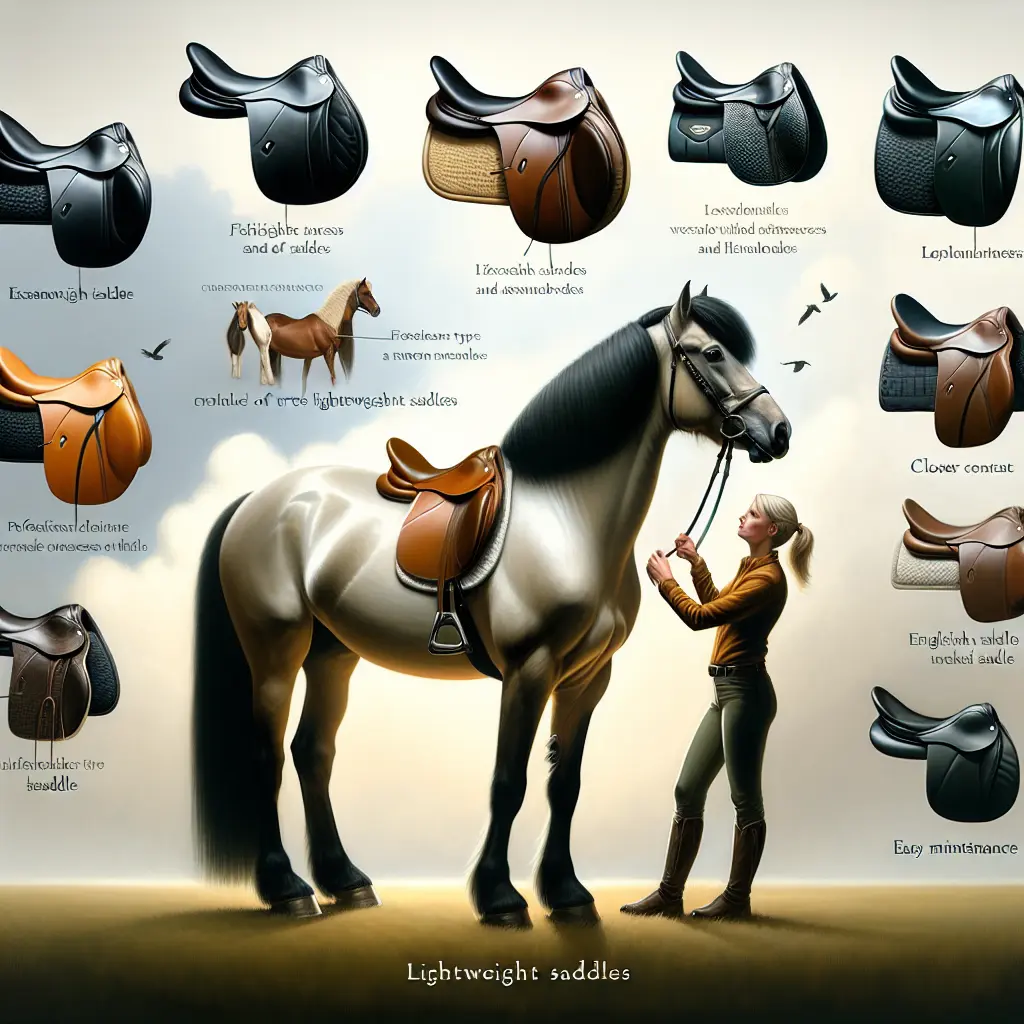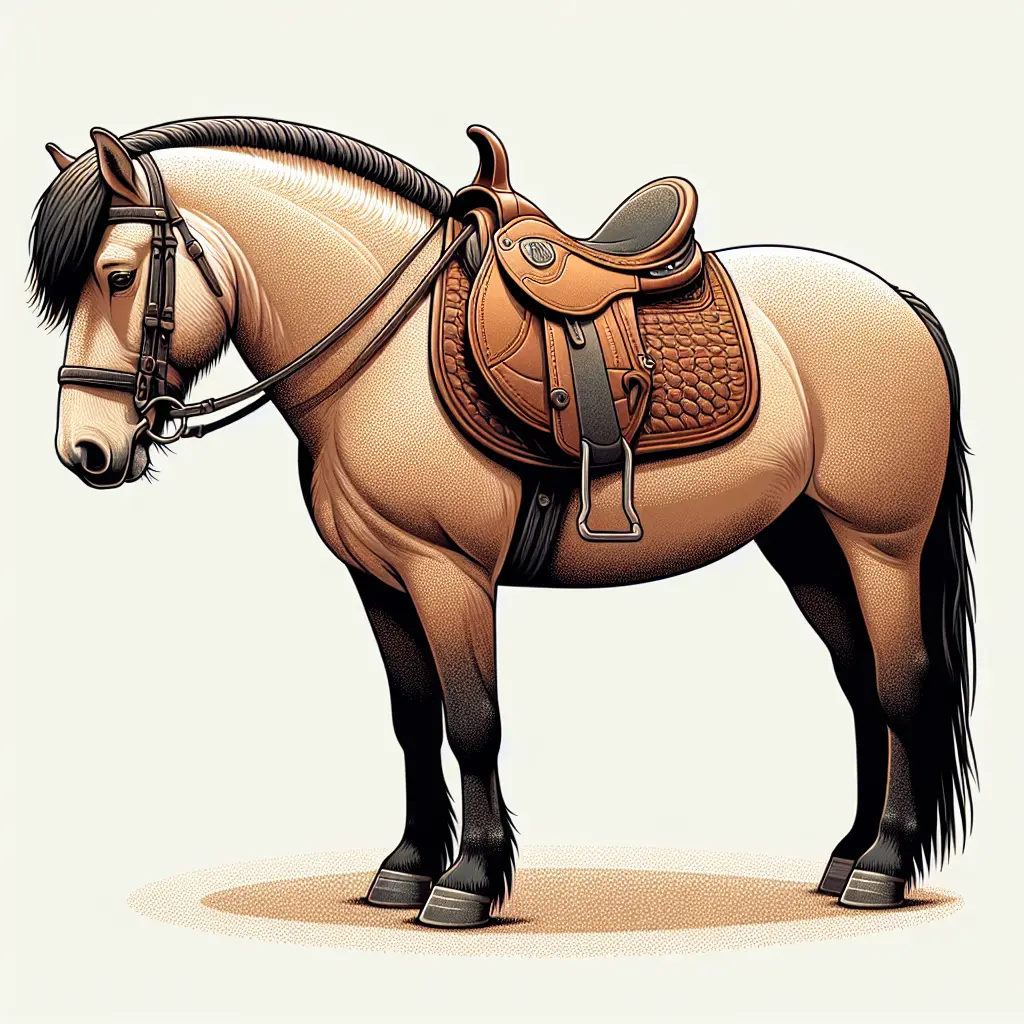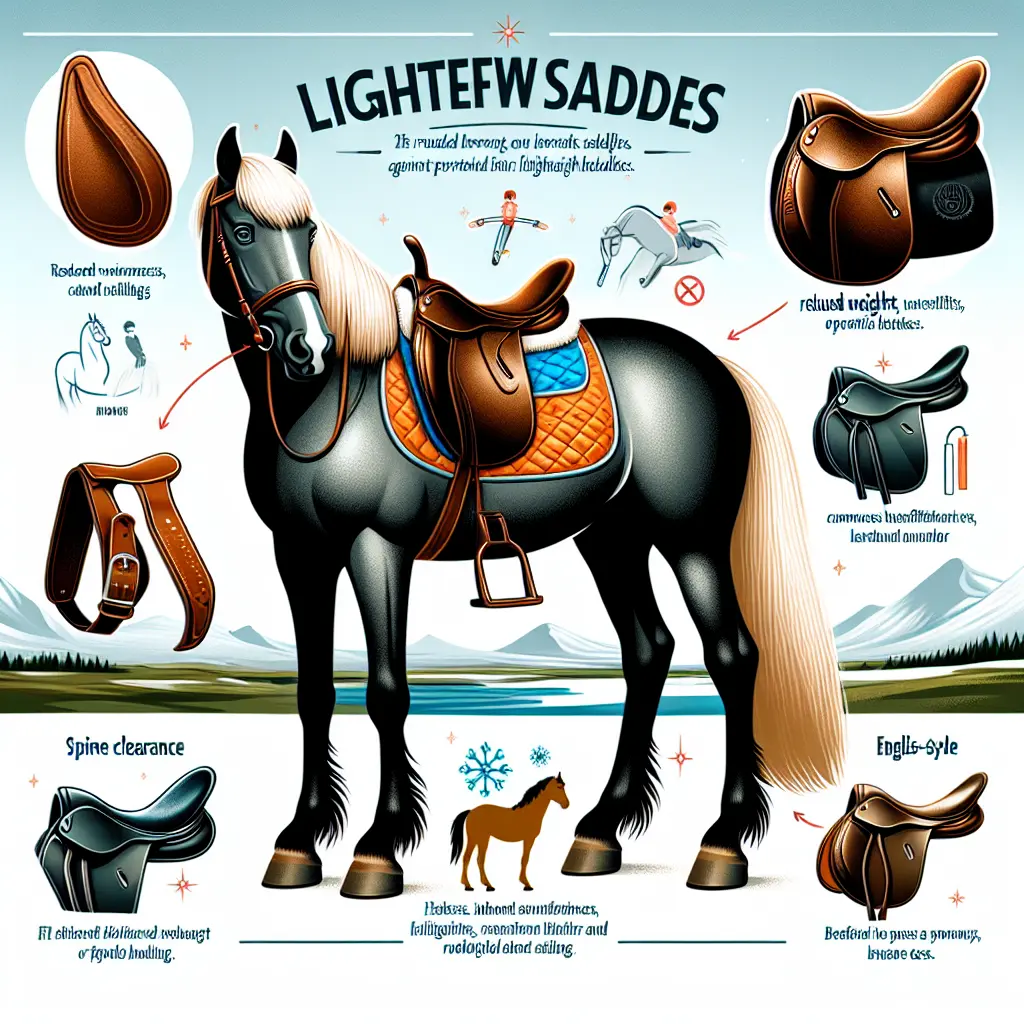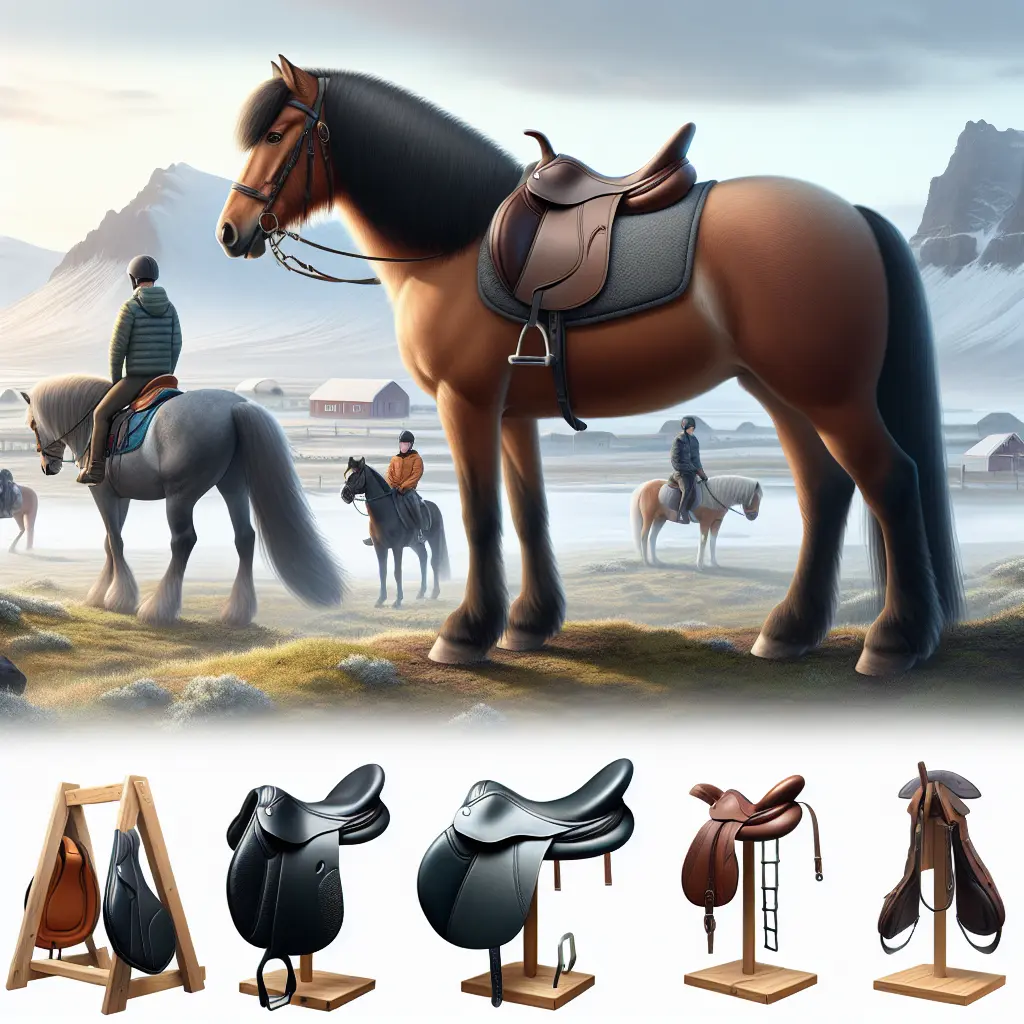Exploring the Pros and Cons of Lightweight Saddles for Icelandic Horses
When it comes to equestrian gear, selecting the right saddle is one of the most important decisions a rider can make. For owners of Icelandic Horses—a breed known for its versatility, comfortable gaits, and strong build—choosing the right saddle can be challenging. In recent years, lightweight saddles have gained significant popularity among riders who value comfort for both horse and rider, easy handling, and enhanced performance. But are lightweight saddles always the best choice? Let’s explore the advantages, disadvantages, and key considerations for using lightweight saddles on Icelandic Horses.

Why Consider a Lightweight Saddle for Icelandic Horses?
Icelandic Horses are typically strong, compact, and well-muscled, often weighing between 330 and 400 kg (700–900 lbs), yet they are expected to carry riders for long distances and perform multiple gaits. Ensuring they are not burdened by heavy tack is crucial for their comfort, health, and performance.
Lightweight saddles—whether treeless, synthetic, or English-style—are designed to minimize the load on the horse’s back, reduce fatigue, and offer more direct communication between rider and horse.
Types of Lightweight Saddles Suitable for Icelandic Horses
-
Treeless Saddles
- Pros: Extremely lightweight, flexible fit for a wide range of horse shapes, close contact with the horse, often highly adjustable.
- Cons: Potential for improper weight distribution if not properly fitted, risk of pressure on the spine if the saddle lacks a proper channel, may shift more easily than treed saddles.
-
English Saddles
- Pros: Lightweight, easy to handle, closer contact with the horse, often more options for customization and fitting.
- Cons: Less stability on rough terrain, limited storage, and no horn for extra security.
-
Synthetic Saddles
- Pros: Very lightweight, easy to clean, often more affordable, quick-drying.
- Cons: Can be less durable than traditional leather, may lack the traditional look and feel.

The Pros of Lightweight Saddles for Icelandic Horses
- Reduced Weight and Fatigue: Every additional kilogram matters, especially for ponies or smaller Icelandic Horses. Lightweight saddles help prevent muscle fatigue and allow horses to perform better over longer distances.
- Versatility and Fit: Treeless and synthetic saddles often fit a wide variety of horse shapes and sizes, which is ideal for Icelandic Horses who can vary in conformation.
- Enhanced Rider-Horse Connection: Lightweight saddles typically allow for closer contact, which can improve communication and responsiveness.
- Ease of Handling: Lighter saddles are easier to lift, clean, and transport, making them a practical choice for riders who travel or ride frequently.
- Performance Benefits: With less weight on their back, horses can move more freely, potentially improving gait quality and endurance.
The Cons of Lightweight Saddles for Icelandic Horses

- Potential for Poor Saddle Fit: Treeless saddles and some lightweight models may not distribute weight evenly if not fitted correctly, leading to pressure points or even injury.
- Less Stability and Security: English and treeless saddles may be less stable during steep descents, rough terrain, or when riding at speed.
- Limited Gear Attachment Options: Many lightweight saddles offer less storage or fewer attachment points for equipment, which can be a drawback on long trail rides.
- Durability Concerns: Synthetic and treeless saddles may not be as durable as traditional leather saddles, requiring more frequent replacement.
- Requires Careful Adjustment: Proper padding and adjustment are crucial with treeless saddles to avoid spinal pressure and ensure comfort.
Expert Tips and Considerations
- Choose the right padding: With treeless saddles, using high-quality, shock-absorbing pads is essential to protect your horse’s back and ensure proper weight distribution.
- Check for spine clearance: Always ensure the saddle has a channel or gullet that prevents direct pressure on the horse’s spine.
- Professional fitting: Have your saddle fitted by a professional, especially with lightweight or treeless models, to avoid discomfort or injury.
- Regular checks: Monitor your horse’s back for signs of rubbing, soreness, or muscle atrophy that could indicate an ill-fitting saddle.
- Consider your riding style: If you enjoy long trail rides or rough terrain, the stability of a slightly heavier or treed saddle might be preferable.

Case Study: Lightweight Saddle Experience
One rider on a small Icelandic Horse reported significant improvements in comfort and performance after switching to a lightweight Tekna saddle, noting how much easier it was to handle and how much lighter the load felt for the horse. However, some riders prefer the security and stability of a deeper, more traditional saddle, especially if they value stirrups and a more secure seat.
Summary Table: Lightweight vs. Traditional Saddles
| Feature | Lightweight Saddle | Traditional (Treed) Saddle |
|---|---|---|
| Weight | Very light (often <5 kg) | Heavier (often 7–15 kg or more) |
| Fit | Flexible, adjustable | More rigid, less adaptable |
| Stability | Lower in rough terrain | Higher, especially on descents |
| Storage | Limited | More options |
| Durability | Varies (synthetic less durable) | Generally more durable |
| Rider Comfort | Often very comfortable | Comfort depends on fit |
| Horse Comfort | Good if fitted correctly | Good if fitted correctly |
Conclusion
Choosing a lightweight saddle for your Icelandic Horse can offer numerous benefits, including reduced fatigue, better fit for a variety of conformations, and enhanced communication with your horse. However, it’s essential to consider the drawbacks, such as potential fit issues, reduced stability, and limited storage. By carefully considering your needs and ensuring a proper fit, you can make an informed decision that benefits both you and your horse.
For more detailed reviews and fitting advice, check out reputable sources like Stacy Westfall’s guide on treeless saddles, Horse and Hound’s forum on lightweight saddles, and Breeches.com’s saddle guide.
If you're looking to expand your equestrian gear, check out our collections on Jodhpur, Horse Riding Boots, and Horse Riding Gloves. Don't forget to browse our Horse Fly Protection options to keep your equine partner comfortable in every season.


